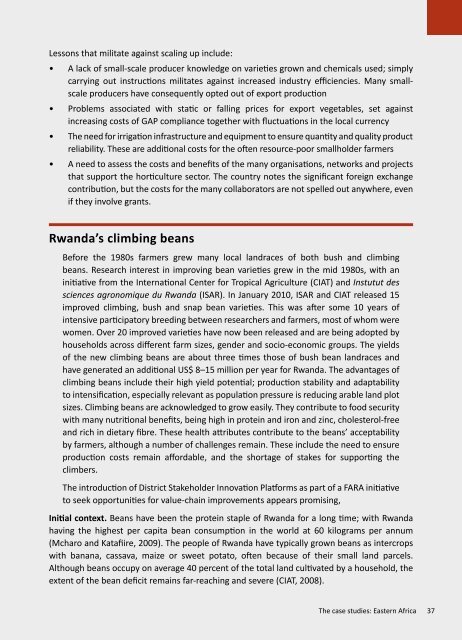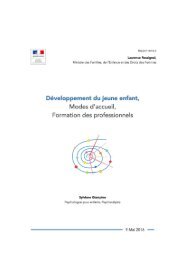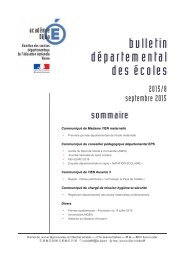agrl_innovations_in_ssa.pdf?utm_content=buffercb41d&utm_medium=social&utm_source=twitter
agrl_innovations_in_ssa.pdf?utm_content=buffercb41d&utm_medium=social&utm_source=twitter
agrl_innovations_in_ssa.pdf?utm_content=buffercb41d&utm_medium=social&utm_source=twitter
You also want an ePaper? Increase the reach of your titles
YUMPU automatically turns print PDFs into web optimized ePapers that Google loves.
Lessons that militate aga<strong>in</strong>st scal<strong>in</strong>g up <strong>in</strong>clude:<br />
• A lack of small-scale producer knowledge on varieties grown and chemicals used; simply<br />
carry<strong>in</strong>g out <strong>in</strong>structions militates aga<strong>in</strong>st <strong>in</strong>creased <strong>in</strong>dustry efficiencies. Many smallscale<br />
producers have consequently opted out of export production<br />
• Problems associated with static or fall<strong>in</strong>g prices for export vegetables, set aga<strong>in</strong>st<br />
<strong>in</strong>creas<strong>in</strong>g costs of GAP compliance together with fluctuations <strong>in</strong> the local currency<br />
• The need for irrigation <strong>in</strong>frastructure and equipment to ensure quantity and quality product<br />
reliability. These are additional costs for the often resource-poor smallholder farmers<br />
• A need to assess the costs and benefits of the many organisations, networks and projects<br />
that support the horticulture sector. The country notes the significant foreign exchange<br />
contribution, but the costs for the many collaborators are not spelled out anywhere, even<br />
if they <strong>in</strong>volve grants.<br />
Rwanda’s climb<strong>in</strong>g beans<br />
Before the 1980s farmers grew many local landraces of both bush and climb<strong>in</strong>g<br />
beans. Research <strong>in</strong>terest <strong>in</strong> improv<strong>in</strong>g bean varieties grew <strong>in</strong> the mid 1980s, with an<br />
<strong>in</strong>itiative from the International Center for Tropical Agriculture (CIAT) and Instutut des<br />
sciences agronomique du Rwanda (ISAR). In January 2010, ISAR and CIAT released 15<br />
improved climb<strong>in</strong>g, bush and snap bean varieties. This was after some 10 years of<br />
<strong>in</strong>tensive participatory breed<strong>in</strong>g between researchers and farmers, most of whom were<br />
women. Over 20 improved varieties have now been released and are be<strong>in</strong>g adopted by<br />
households across different farm sizes, gender and socio-economic groups. The yields<br />
of the new climb<strong>in</strong>g beans are about three times those of bush bean landraces and<br />
have generated an additional US$ 8–15 million per year for Rwanda. The advantages of<br />
climb<strong>in</strong>g beans <strong>in</strong>clude their high yield potential; production stability and adaptability<br />
to <strong>in</strong>tensification, especially relevant as population pressure is reduc<strong>in</strong>g arable land plot<br />
sizes. Climb<strong>in</strong>g beans are acknowledged to grow easily. They contribute to food security<br />
with many nutritional benefits, be<strong>in</strong>g high <strong>in</strong> prote<strong>in</strong> and iron and z<strong>in</strong>c, cholesterol-free<br />
and rich <strong>in</strong> dietary fibre. These health attributes contribute to the beans’ acceptability<br />
by farmers, although a number of challenges rema<strong>in</strong>. These <strong>in</strong>clude the need to ensure<br />
production costs rema<strong>in</strong> affordable, and the shortage of stakes for support<strong>in</strong>g the<br />
climbers.<br />
The <strong>in</strong>troduction of District Stakeholder Innovation Platforms as part of a FARA <strong>in</strong>itiative<br />
to seek opportunities for value-cha<strong>in</strong> improvements appears promis<strong>in</strong>g,<br />
Initial context. Beans have been the prote<strong>in</strong> staple of Rwanda for a long time; with Rwanda<br />
hav<strong>in</strong>g the highest per capita bean consumption <strong>in</strong> the world at 60 kilograms per annum<br />
(Mcharo and Katafiire, 2009). The people of Rwanda have typically grown beans as <strong>in</strong>tercrops<br />
with banana, ca<strong>ssa</strong>va, maize or sweet potato, often because of their small land parcels.<br />
Although beans occupy on average 40 percent of the total land cultivated by a household, the<br />
extent of the bean deficit rema<strong>in</strong>s far-reach<strong>in</strong>g and severe (CIAT, 2008).<br />
The case studies: Eastern Africa 37






